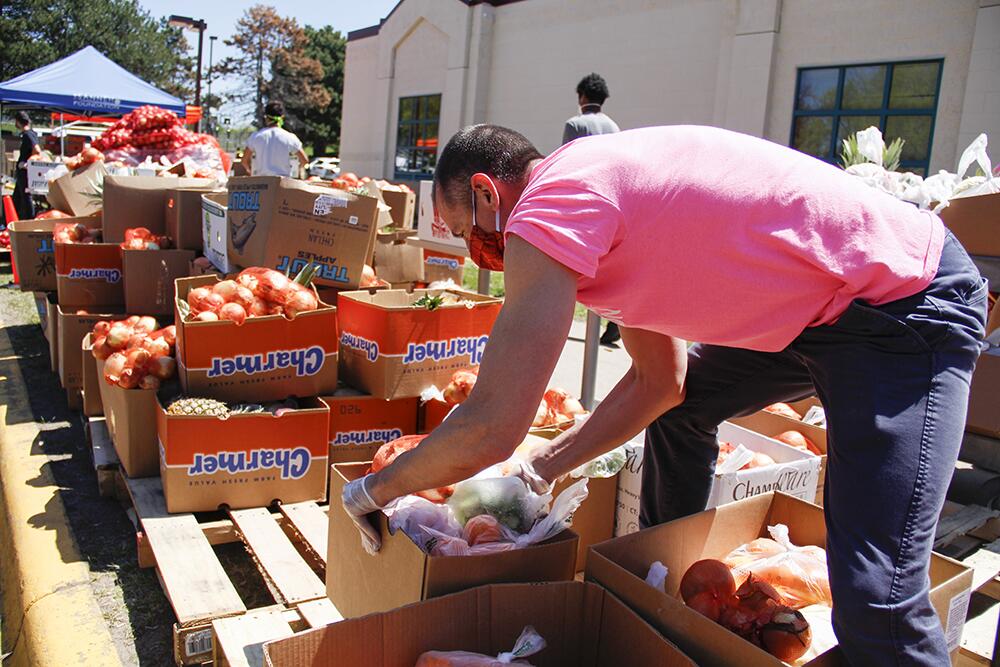Low-income households get nutritious food from food banks, study shows

URBANA, Ill. – Millions of Americans vulnerable to hunger receive support from public food assistance programs, including the Supplemental Nutrition Assistance Program (SNAP). But they also rely on private charities such as Feeding America, the umbrella organization for food banks across the country.
A new University of Illinois study explores the relationship between public and private food assistance, concluding both types are important for meeting the needs of food insecure households.
“We found that when households receive their SNAP benefits they don’t obtain charitable food assistance, but as the SNAP benefits run out, they do,” says Craig Gundersen, distinguished professor of agricultural and consumer economics in the College of Agricultural, Consumer and Environmental Sciences (ACES) at U of I and co-author of the study.
The findings indicate SNAP benefits may not be sufficient to cover all recipients’ needs, making access to charitable food assistance very important for alleviating hunger in the U.S., Gundersen adds. The study analyzed data from more than 4,000 households in a comprehensive survey on food purchases and acquisitions conducted by the United States Department of Agriculture (USDA).
The researchers also estimated the nutritional value of the food obtained from food banks.
“We found the food people get from charitable food assistance programs is slightly more nutritious than the food that they purchase from grocery stores and other sources,” Gundersen says.
Feeding America has made a focused effort to provide healthy food choices such as fruits, vegetables, and healthy protein sources in food pantries, Gundersen explains. “Our study shows that their efforts work as intended; people are able to get healthier food from food pantries than what they might otherwise obtain.”
Gundersen adds that the study, which is the first to directly compare food obtained from public and private assistance programs, documents the critical importance of food banks in alleviating food insecurity.
“Our findings show that policies to make food banks a larger part of a food assistance network are really important,” he says. “Because they work in tandem, expansion of SNAP benefits would also benefit charitable food assistance programs. If SNAP recipients relied on food pantries less, the food banks would have food available for more people.”
The article, “The Use of Charitable Food Assistance among Low-Income Households in the U.S.” is published in Journal of the Academy of Nutrition and Dietetics. [https://doi.org/10.1016/j.jand.2020.07.026]
Authors include Craig Gundersen, Linlin Fan, Kathy Baylis, and Michelle Saksena.